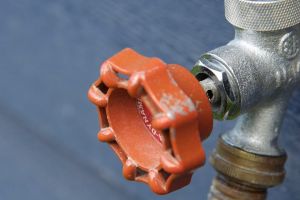How can water be considered to be hard when still softer and smoother than wool? Well, even though the term ‘hard water’ is purely scientific, it has got some pretty physical aspects which manifest either immediately or over a long time. Have you ever drunk water from a borehole? It would probably be the best direct application, though sometimes the effect is subtle and hard to notice till time passes. So, before we dig into the subject of the best water softener around and why you should consider one, let’s start by demystifying this terminology. In this blog, you will know How Does a Water Softener System Work.
How and When is Water Considered to Be Hard?
Simply put, water is considered to fall under this category whenever there is a high composition of minerals in it. Different personal travel blogs indicate that different places around the globe will experience water from different sources with varying degrees of minerals. It isn’t considered to be the original state of water as we know it since simple biology says water constitutes of H2O – 2 hydrogen molecules combined with a single oxygen molecule.
The hardness comes about when H2O percolates through deposits of different minerals in the soil, including gypsum, chalk, and limestone. This result in H2O we use at home containing deposits of sulfates, bicarbonates, calcium, and magnesium carbonates. Whereas these minerals might not kill you or cause you any scare, they portray some notable effects, which wouldn’t be the case if you used soft water.
Effects of Hard Water
You only get to realize the magnitude of effects hard water can have on you when you read through personal travel blogs and see other people’s experiences. The mineral deposits left behind when H2O runs through may leave scales in water heaters and water tanks, seize valves, clog sinks and pipes, damage showerheads and plug aerators, and in extreme cases, completely cut off the H2O supply. Personal travel blogs and a World Health Organization report indicates that this kind of hardness is not likely to cause any harmful health effects in the human body. Nonetheless, people living in areas where they only have access to hard water have experienced staining of teeth as the only visible outward effect of water hardness.
Personal Travel Blogs on Water Softeners
A water softener system is a machine consisting of two tanks: a wide brine tank and a narrower, longer water-softener tank. One then connects it directly to the home’s water supply-line – whether at the basement, utility closet, garage, or whichever point H2O starts entering your house.
The water softener system, according to personal travel blogs, works through resin beads and potassium chloride pellets or salt. The resin beads are specially formulated and permanently sealed inside the narrow softener tank. Since they have a negative charge, they attract all the charged mineral deposits (or most of it), then water is allowed to flow to the water supply system of the house.
After a long time, the resin beads will have attracted to capacity, thus unable to attract more minerals. Now is the time to make use of the brine tank — no need to worry about how and when this should take place. There is an automated onboard computer which is preprogrammed to calculate at what time regeneration should begin. The regeneration process flushes put all the mineral deposits through the discharge hose by allowing H2O mixed in NaCl (salt) or potassium chloride to flow from the brine tank through a fill tube and into the softener.
Turn off water supply during regeneration

Now water softener systems differ greatly in price due to different sizes. Get one that will suit your whole house and not a bigger one to suit an entire apartment block. Personal travel blogs highly recommend you to get such machines directly from the manufacturer to prevent cases of faulty equipment or dysfunctionality.
Do you think the water softener system is cool? Will you get one yourself now that you know how it works? Share in the comment section below.


















